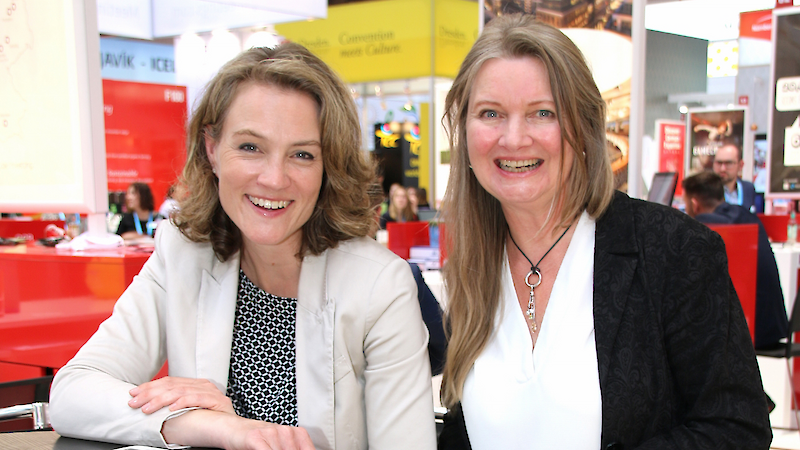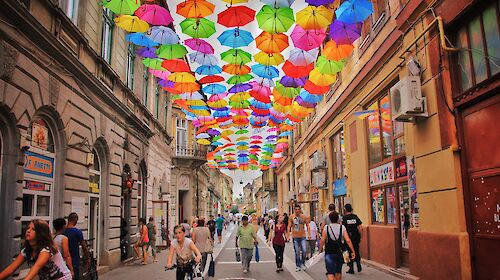Accessible Events: Creating Experiences - for All!
Guest Article by Kerstin Hoffmann-Wagner and Gudrun Jostes
 © iStoc.com / Paperkites
© iStoc.com / Paperkites
The terms inclusion and accessibility have been cropping up more and more frequently in connection with events in recent years. One reason for this is certainly the urgently overdue focus on sustainable event planning, since one of the equally important pillars of sustainability, social sustainability, includes the inclusive idea as a self-evident aspect.
Kerstin Hoffmann-Wagner and Gudrun Jostes
Since 2015, Kerstin Hoffmann-Wagner, event consultant and certified trainer, and Gudrun Jostes, Dipl.-Ing., expert and specialist planner for barrier-free construction in the field of accessible events and trade fairs.
They apply their holistic approaches in their consulting work for accessibility projects and locations. With their lectures and targeted consulting and training offers on inclusion and accessibility, they provide event organizers, event planners and location operators from companies, associations and institutions with guidance, up-to-date information and new impulses. They are authors of the joint practical book "Barrierefreie Events" (SpringerGabler, 2021), expert authors in the collective work "CSR in Hessen" (Springer-Gabler, 2021) and expert authors in the collective work "Atlas barrierefrei bauen" (RudolphMüllerVerlag, 2018).
Contact
Phone: +49 (0) 61 08 79 08 92
eMail: info@events-barrierefrei.de
But we also have to think further ahead, because inclusion is the central idea of the UN Convention on the Rights of Persons with Disabilities and is thus enshrined as a human right. In Germany, the UN Convention has been enshrined in law since 2009. By planning sustainable events with accessable formats incorporated as a matter of course, event teams ensure that the associated socially relevant goals are implemented.
Human Right Inclusion and No Interest in It?
So far, only a few event teams have ventured comprehensively into the topic of accessible events. Comprehensive in the sense that the different needs of people, especially those with mobility impairments, sensory impairments, or cognitive impairments, are equally recorded in order to incorporate this as the basis for new implementation strategies for forward-looking events. Such an approach would be an important step in the right direction, because only in this way can the claim to colorful diversity with experiences for all be guaranteed.
What Exactly Are Accessible Events?
Accessible events are characterized by the fact that the participation of all can take place at eye level. Independent accessibility and participation without outside assistance are key aspects here.
The fundamental question before starting to plan an event should be: Are there obstacles or barriers that could prevent people from participating? Incidentally, this question arises for both face-to-face and online events. An answer to this and to get an eye for barriers, a change of perspective is very helpful. Sensitization, for example through a wheelchair challenge and the exploration of a location with sight-restricting glasses, gives a feeling of what could prevent people from participating in an event.
How Are Accessible Events Made Possible?
When event teams deal with the topic of accessibility for the first time, the question is often asked how they could find out what needs their own participants might have? Here it is advisable to develop a structure by dividing your own event project into two phases in terms of time and content.
 © Hoffmann-Wagner / Jostes
© Hoffmann-Wagner / Jostes
In the first phase of the project, when there is still no contact with potential participants, it is not yet possible to identify specific needs; standards are used for the time being. They are defined in advance and apply to all types of events.
At the beginning, there should always be a clear commitment on the part of the top management that the event should be as inclusive as possible and thus barrier-free. Analogous to sustainability, this is a planning process that is documented, evaluated and communicated. The investment in further training of one's own team plays an important role in parallel, in order to be able to integrate professional standards into the event planning here.
In this phase, however, it is also a matter of concrete, tailor-made measures that are also firmly established for subsequent events.
Here are just a few of the most important measures for greater accessibility:
- The right venue is of great importance. It should be accessible to all. Make sure that there are enough accessible parking spaces. Check that the main entrance has no steps, sufficient passage width and that the event room, toilets and catering areas are accessible and usable without steps.
- Prepare accessible communication. Ensure that all event materials, including handouts and presentations, are in easy-to-understand language. Also consider whether captioning or sign language is appropriate. Design your website to be as accessible as possible with sufficient contrast and font sizes.
- Prepare accessible technology: Make sure all technology devices, including microphones and projectors, are accessible to all participants. Use inductive equipment for them, which can be provided for hearing aid users at best in the location.
Only in the second phase of event planning is it possible to make direct contact with registered persons, especially via registration tools. Here, specific needs, especially in the areas of mobility, vision and hearing, can be inquired about. Likewise, the special needs in catering for reasons of intolerance or vegan or vegetarian diets. By considering the standards from phase 1, most accessability aspects are already integrated. If very special needs arise from feedback, direct communication with an associated feasibility check is important.
For Whom Do We Plan Accessible Events?
Basically for everyone. For a certain number of participants, accessibility is essential, for others it is helpful, and for everyone else, including those entrusted with the planning and execution of the event, accessible events are always a gain in comfort. For example, the transport of heavy stage equipment in flight cases is a relief and information in high-contrast and sufficiently large font can be perceived better and faster by most people.
Ultimately, it is about event teams managing to attract as many visitors as possible, to get them excited and to offer them an impressive experience. To do this, knowing the needs of people attending and knowing barrier-free measures is essential for planning event concepts. Only in this way will the pillar of social sustainability find an equal place in sustainable event planning.
 ©
© ©
© ©
©